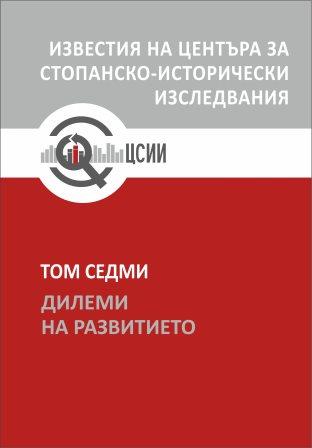Търговците и чифлиците – аграрните дилеми на Димитър Бракалов през 60-те – 70-те години на XIX век
The Merchants and Their Çiftliks – Dimitar Brakalov and His Agrarian Dilemmas in the 1860s and 1870s
Author(s): Nikolay Todorov, Petar DobrevSubject(s): History, Economy, Business Economy / Management, Agriculture, Economic history, Social history, 19th Century, Financial Markets, Marketing / Advertising
Published by: Център за стопанско-исторически изследвания
Keywords: çiftliks; Ottoman Empire; Bulgaria; Burgas; Agrarian question
Summary/Abstract: The present research was provoked by an extremely interesting correspondence between two Bulgarian merchants, Dimitar Brakalov and Hristo Tapchilestov, entirely dedicated to the leasing, management and organization of production in several çiftliks in the Burgas region, on the Black Sea coast. The documents span from the 1860s to the 1870s and are stored in the Bulgarian Historical Archive of the National Library "St. St. Cyril and Methodius". There are a total of 72 letters with the main addressees – Hristo Tapchilestov and Nikola Tapchilestov. Our paper dwells in more detail on the history of the çiftliks in question – in the villages of Atanasköy and Keleshköy. The information from the letters was correlated to data extracted from two types of Ottoman archives, which are particularly valuable for the reconstruction of the Ottoman economy in the 19th century – the temettuat and nüfus defters. Thanks to these documents, the complete reconstruction of the structure of the çiftliks was possible: quantity of crops, yields, employment of seasonal workers, but also the amount of owned land, farm animals, taxes paid, total annual yield etc. The economic networks that were built around the çiftliks is also outlined. Judging from the data, the estates were quite profitable, strived for capitalist modernization and paid decent wages to the hired labour force. Our archival work showed that the çiftliks Atanasköy and Keleshköy were originally owned by high-ranking representatives of the Tanzimat political elite, but also direct relatives of the ruling sultans – Mahmud II and Abdulmejid I. This shows that large estates were considered a profitable investment by the Muslim elite at the time, but also by rich Christian merchants like Brakalov, who started leasing the çiftliks in the 1860s. The researched estates continued to be profitable even after the separation of Bulgaria from the Ottoman Empire in 1878, when Brakalov became their owner, showing the durability of the çiftlik phenomenon.
Journal: Известия на Центъра за стопанско-исторически изследвания
- Issue Year: VII/2022
- Issue No: 1
- Page Range: 320-332
- Page Count: 13
- Language: Bulgarian
- Content File-PDF

